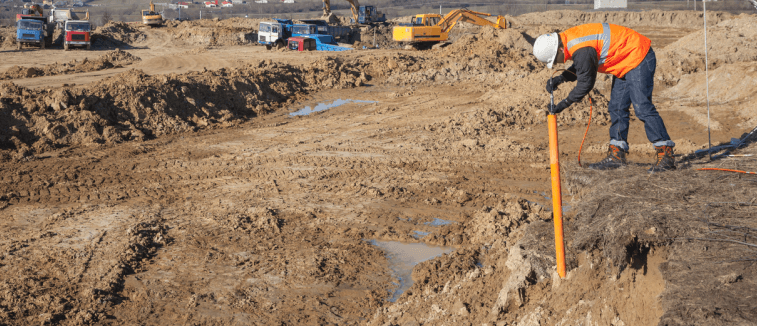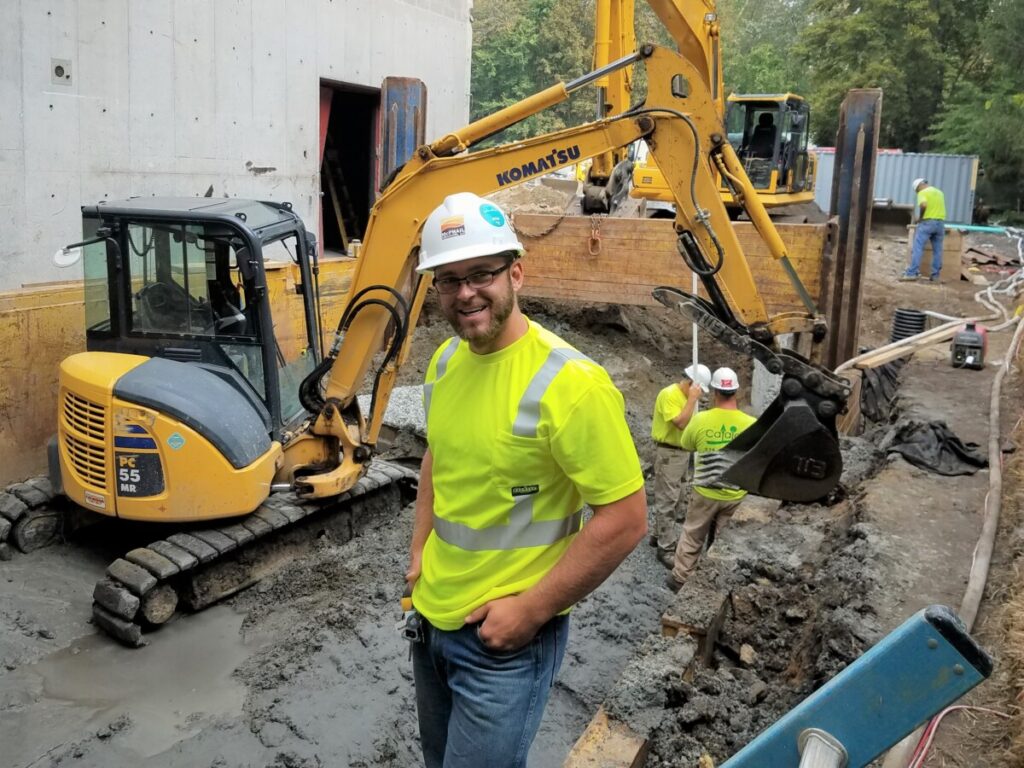Why Employing a Geo Tech Engineer is Essential for Facility Building Tasks
Why Employing a Geo Tech Engineer is Essential for Facility Building Tasks
Blog Article
Understanding the Crucial Role of the Geotechnical Market in Modern Construction Projects and Framework Growth
The geotechnical industry is a cornerstone of modern construction and framework development, providing important understandings right into dirt habits that directly affect job outcomes. With sophisticated dirt assessments and cutting-edge design solutions, geotechnical professionals not only make sure structural stability but likewise address sustainability issues amidst advancing environmental criteria.
Relevance of Dirt Evaluation
Dirt analysis plays an important duty in the geotechnical industry, working as the foundation for notified decision-making in construction projects. Exact soil assessment is vital for establishing the suitability of a site for different sorts of frameworks, including household homes, business structures, and bridges. By assessing dirt make-up, thickness, stamina, and moisture web content, designers can prepare for potential difficulties and reduce threats linked with ground instability, disintegration, and settlement.
The evaluation procedure usually includes a series of examinations and observations that give essential information concerning the subsurface conditions. This data notifies the layout and building procedures, making sure that frameworks are improved strong ground with adequate assistance. Moreover, understanding the dirt profile enables designers to choose suitable building approaches and materials, optimizing resource use and decreasing costs.
In addition to making sure architectural integrity, soil assessment adds to ecological sustainability. By recognizing potential contamination or unfavorable results on bordering ecosystems, engineers can execute strategies to safeguard these natural resources. Overall, thorough soil assessment is essential in the geotechnical area, underpinning the safety and security, performance, and ecological duty of building projects.
Trick Geotechnical Techniques
A range of vital geotechnical methods are used to boost the security and evaluate and performance of building and construction sites. One foundational method is dirt tasting and screening, which enables designers to determine the chemical and physical residential or commercial properties of the ground. This info is crucial for making informed decisions regarding structure design and building and construction techniques.
One more essential technique is site characterization, which entails the comprehensive assessment of dirt and rock conditions via approaches such as borehole drilling and in-situ testing. Strategies like Requirement Infiltration Tests (SPT) and Cone Infiltration Examinations (CPT) provide valuable data on dirt strength and stratigraphy.
Ground enhancement techniques, such as dirt stablizing and grouting, are also important in enhancing the load-bearing ability of weak soils. These methods can alleviate settlement and enhance total site problems.
Furthermore, incline stability analysis is important for identifying possible landslide threats and making certain the safety of excavations. This evaluation frequently uses mathematical modeling and restriction balance techniques to anticipate dirt actions under different problems.
Including these geotechnical strategies into building preparation not just enhances project results however also ensures the lasting sustainability of facilities development.
Influence on Construction Safety And Security

Furthermore, click for source efficient geotechnical design entails executing mitigation methods for determined dangers. This may consist of soil stablizing techniques, preserving structures, or drainage systems to reduce hydrostatic pressure. By resolving these factors, building and construction groups can decrease the likelihood of mishaps and enhance employee security.
Additionally, continual surveillance of website problems is vital throughout construction. Geotechnical tools can give real-time data concerning ground motion and stability, permitting prompt treatments when essential.
Basically, the geotechnical industry plays a crucial duty in securing building and construction projects. By focusing on ground integrity and employing rigorous analysis techniques, the geotechnical industry not only shields the workforce yet likewise adds to the long life and integrity of created facilities.
Sustainability in Geotechnical Practices

In addition, geotechnical designers are currently using innovative innovations, such as geosynthetics, which enhance soil security while lowering the volume of material required. my response This not only saves sources yet additionally causes less waste generation (consulting engineer). The assimilation of lasting style concepts right into geotechnical engineering urges making use of sustainable energy sources in construction processes, further lowering carbon discharges
In addition, detailed site evaluations are necessary for recognizing possible environmental effects prior to building and construction starts. By performing these analyses, geotechnical specialists can develop approaches that mitigate damaging effects, making sure conformity with environmental laws. Overall, the emphasis on sustainability within geotechnical practices not only adds to the longevity and strength of framework yet likewise promotes a responsible technique to land and source administration. This dedication is important for fostering lasting growth in the contemporary building landscape.
Future Trends in Geotechnical Engineering
Development is driving the future of geotechnical design, as arising technologies and techniques improve the market. The combination of advanced data analytics and expert system is readied to transform website investigation and threat analysis, allowing engineers to make even more enlightened choices based on real-time information. The usage of geosynthetic products is getting grip, providing lasting options that boost soil security and lower ecological effect - geo tech engineer.
Another substantial trend is the fostering of automated and robotic systems for surveillance and construction procedures. These innovations not just enhance precision but likewise improve security by decreasing human involvement in harmful environments. In addition, the application of Structure Information Modeling (BIM) in geotechnical style facilitates boosted partnership among stakeholders, enhancing task delivery and reducing expenses.
As climate change postures new challenges, the market is increasingly concentrating on resilience and versatility in layout methods, making certain framework can endure extreme weather events. The continuous fad towards sustainability will check this site out drive advancement in eco-friendly materials and techniques, straightening geotechnical engineering with more comprehensive environmental objectives. Collectively, these fads will form an extra efficient, lasting, and durable geotechnical landscape for future projects.
Verdict

The geotechnical sector is a foundation of contemporary building and facilities advancement, offering vital insights into soil behavior that directly affect project outcomes. engineer of record.Dirt assessment plays an essential role in the geotechnical market, serving as the structure for educated decision-making in construction tasks. On the whole, complete dirt analysis is essential in the geotechnical area, underpinning the safety, performance, and ecological obligation of construction tasks
Construction security is substantially influenced by geotechnical techniques, as the stability and stability of the ground directly affect the overall security of a construction site.In final thought, the geotechnical sector is essential in modern-day building and facilities advancement, offering vital assessments that guarantee architectural integrity and safety and security.
Report this page